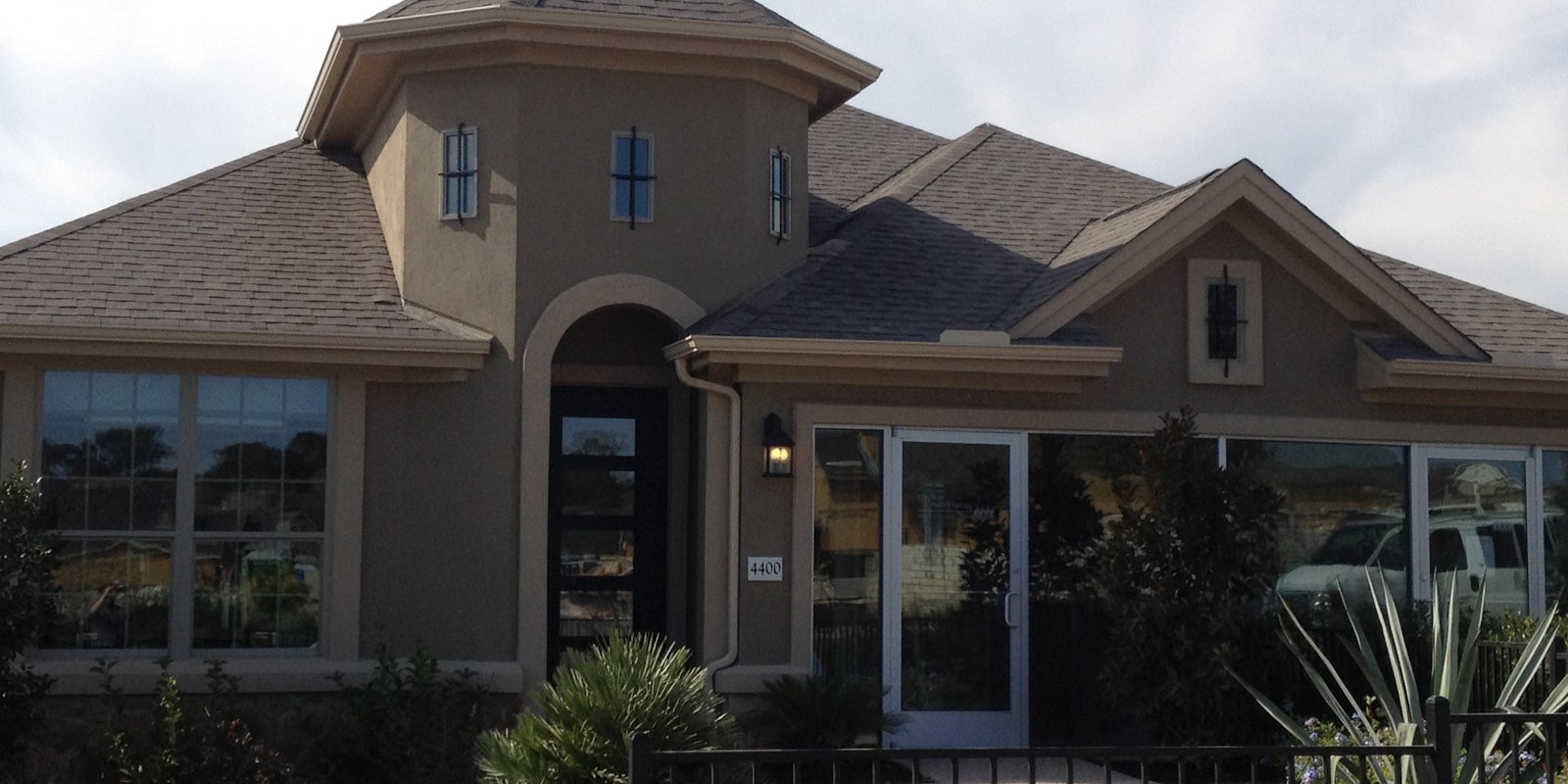The model home at Taylor Morrison’s Ladera housing development in Bee Cave, Texas, looks like any other modern house when you approach it from the road. There’s a large front door, five windows, and a few plants to bring the place to life. It’s more of the same when you walk through the door either. There’s the landing to your left, a room immediately to your right.
In fact, it’s not until you take a few steps inside the house that you notice things are slightly different.
“This, to your right, is the children’s nook,” Kristin France tells me as I turn inside the house. “It’s got a full-on kitchen.
“Every kid who comes through here, this is where they stop. They’ll just hang out here while the parents look around the house. I have a two-year-old, and I can guarantee that she’d be in here—and I’d have a hard time pulling her out. “
What I’m looking at is a doorframe that’s about three-quarters short of normal. It’s nestled into a wall underneath the stairs, and around it is a painting that’s meant to allude to cottages. This is the children’s nook, and on the wall someone has painted a sink and stove.
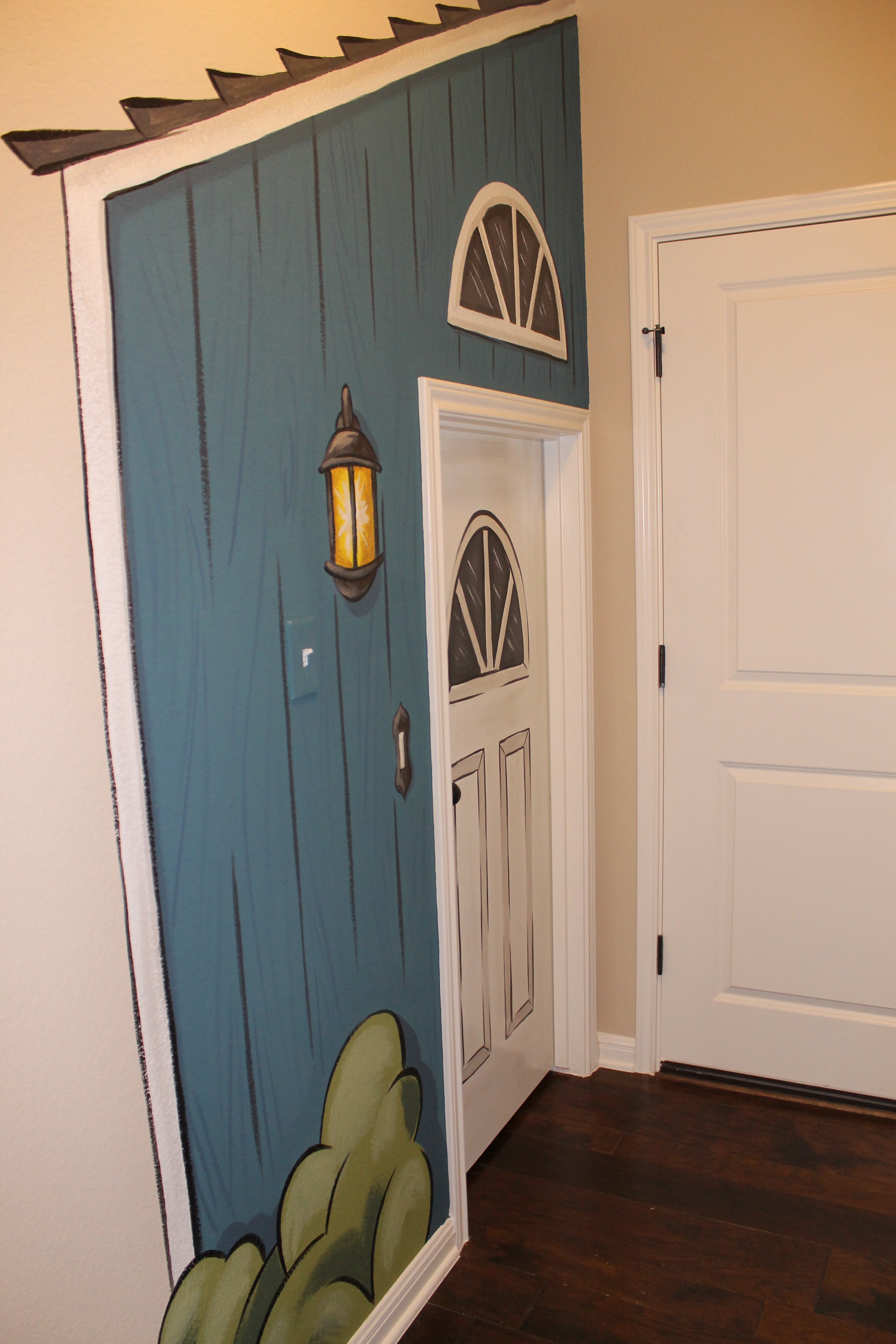
“This was actually first designed to be here for a dog,” France says. “But any kid would love it.”
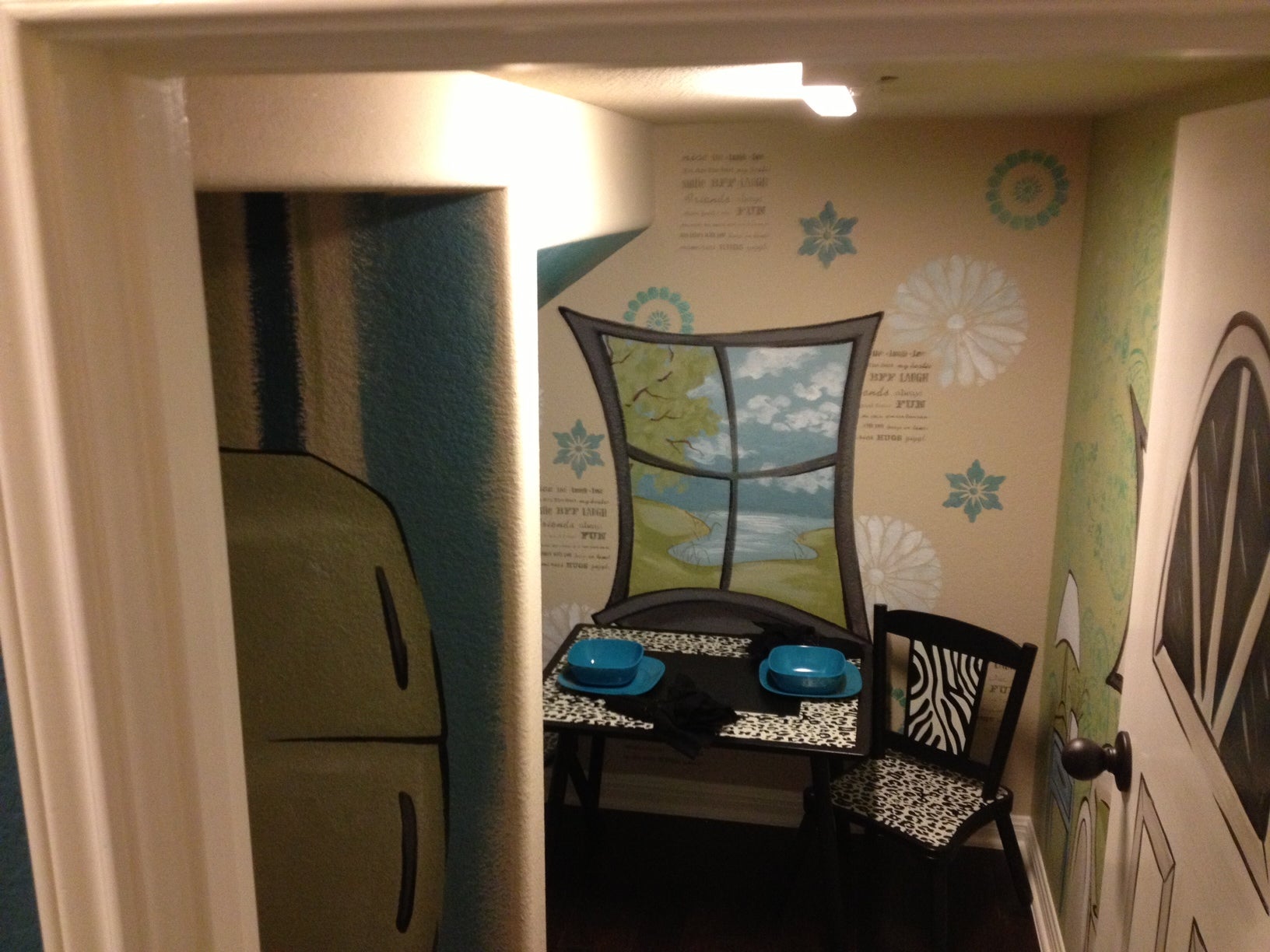
Ladera is not your traditional housing development. Rather, it’s a revolutionary social community—a series of what Taylor Morrison considers the interactive homes. For the first time in the history of homebuilding, a development company has decided to crowdsource the design process. As France explains, every house on the Ladera lot will draw a certain semblance of inspiration from designs the company found on Pinterest.
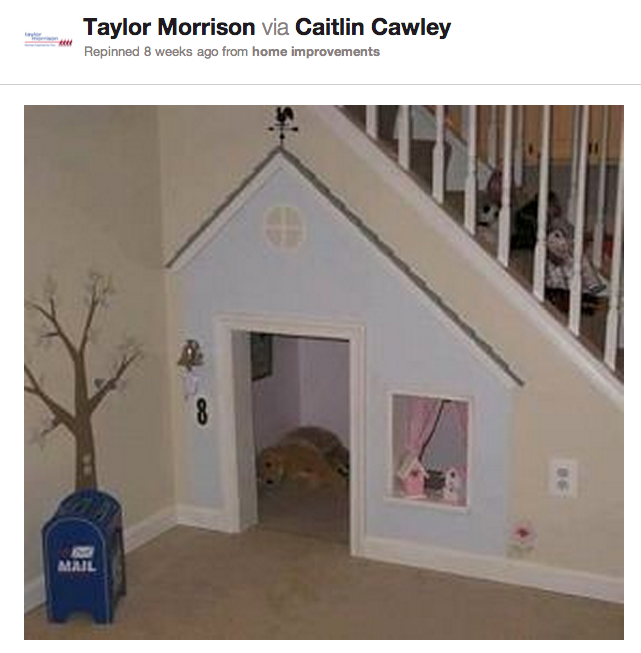
Pinterest is the fastest growing social network on the Internet, a behemoth of beauty and inspiration that’s grown to more than 16 million users—albeit predominantly women. The site has become the unofficial wish list for dreamers and believers alike—an online destination for one-stop window shopping. People pour through other users’ pinboards to find the objects they like most. When they find something, they pin it. Thus, their own pinboards become a vessel for the things they like and want.
And while I don’t have the cold, hard numbers to back it up, from circumstantial evidence, I feel safe in saying that a substantial amount of those users have filled at least one of their pinboards with a series of things they’d like to see in their dream homes: lofty light structures, super modern kitchen constructions, cute little craft rooms, and tiny nooks under the steps for their children.
France, a marketing manager at Taylor Morrison, is no different. She’s got a “My Next House…” pinboard with 77 different pins and says that’s how she got the inspiration to build these homes.
“We were doing our frame walk,” she remembers. “We always pick out of floor plans and what we’re going to build before anything happens.
“We were walking through this house and got to the steps, and I said, ‘We’ve got to make that a children’s nook under the stairs,’ because I knew that we had to make it a functional space. I pulled the image up on my phone, and everybody agreed.”
The kitchen design and craft room upstairs played out much the same way. France looked at the framework of the house and then consulted her pinboard. With the kitchen, she found a design that played to a long island and walkway. Upstairs in the craft room, she reverted to an old favorite: a two-sided desk that looks made for creative collaboration.
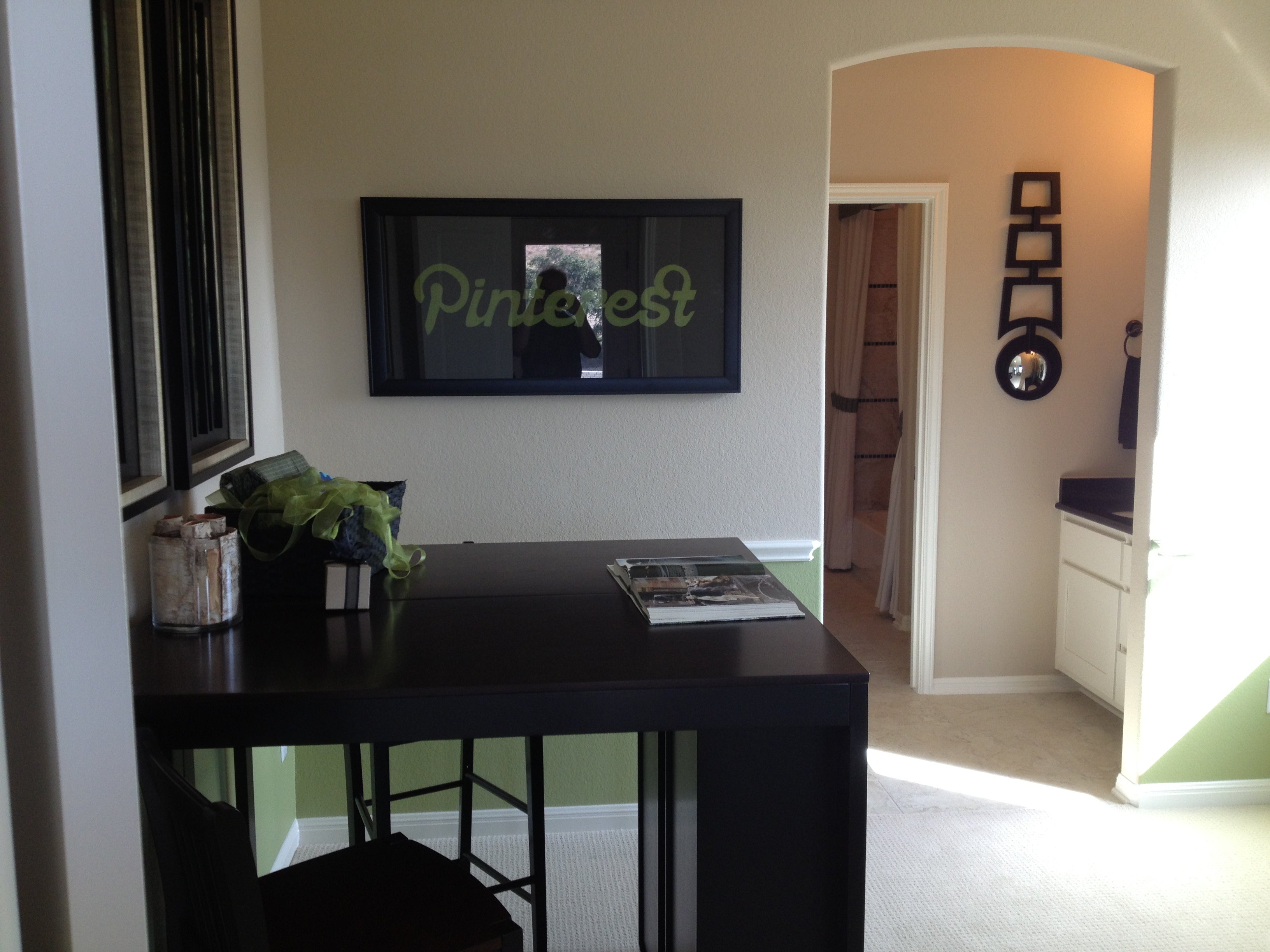
“We’re showing people that they can have these homes. I think that’s what Pinterest does. Your hopes and dreams of what you could have or could create: We’re trying to make that a reality for people who can’t visualize it.”
—Kristin France
France says that Taylor Morrison is planning to build 260 different houses on the lot, with each pulling different dream designs from Pinterest. And while she laments the fact that the company can’t yet cater to personalized requests, the fact that she and her colleagues are able to show actual visualizations of room conceptions can be a legitimate boost for business.
“After years of hearing people say, ‘I wish you had done this’ or ‘I wish you had done that,’ this has helped create the solution,” France adds. “We’ve revamped a lot of our floor plans in the last two years basically to cater to all those requests.
“We made those decisions based on what’s popular and what these pinners are requesting. We could show that the room upstairs could be a study or craft room or baby’s room. These visuals help people move into them.”
Photos via Chase Hoffberger

